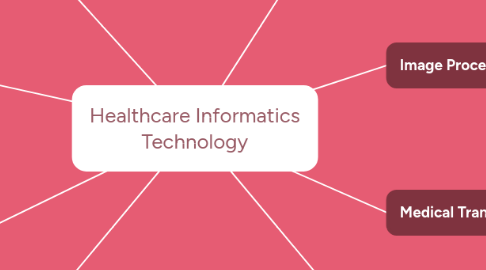
1. Cancer Registry
1.1. Computerized registry software to conduct lifetime follow-up on each cancer patient (performed by certified tumor registrars, CTRs)
1.2. Electronically transmit data to state and national agencies (Georgia Center for Center Statistics, ACS National Center Data Base)
1.3. Generating statistics and graphs for the cancer program annual report
2. Department administration
2.1. Registered Health Information Administrators (RHIA) and Technicians (RHIT)
2.1.1. Developing, monitoring, and improving systems related to the establishment
2.1.2. Planning activities of subordinate managers and staff
2.1.3. Monitor, establish policies and procedures for, and enhance the quality of patient care and management practices
3. Incomplete Record Processing
3.1. The assembly and analysis of discharged patient records
3.2. Universal Chart order - the discharged patient record is organized in the same order as when the patient was on the nursing floor
4. Record Circulation
4.1. Retrieval of patient records for the purpose of:
4.1.1. Impatient readmission (records are transported to nursing units)
4.1.2. Scheduled and unscheduled outpatient clinic visits (records are transported to clinics)
4.1.3. Authorized quality-management studies (records remain in the health information department for review)
4.1.4. Education and research (records remain in the health information department for review)
4.1.5. Records are requested by calling the health information department or submitted a record request through an automated patient management syste4m
5. Coding and abstracting
5.1. Assigning numeric and alphanumeric codes to diagnoses, procedures, and services (performed by certified coding specialists)
5.1.1. Current Procedural Terminology (CPT), consists of 5 digit codes assigned to ambulatory procedures and services
5.1.2. International Classification of Diseases, Tenth Revision, Clinical Modification (ICD-10-CM) used in the US to collect info about disease and injury and to classify diagnosis
5.2. Abstracting of the patient cases is performed to enter codes and other pertinent information
5.2.1. purpose is to generate statistical reports and disease/procedure indexes, used for administrative decision-making and quality management purposes
6. Image Processing
6.1. Convert paper records to an electronic health record (EHR)
6.1.1. an EHR is an automated, accessible record that contains multimedia data
6.1.2. Only employees who are granted "need to know" access are allowed access to the EHR
7. Medical Transcription
7.1. the accurate and timely transcription of dictated reports (history, physical examination, discharge summary)
7.2. Printed reports are filed in the patients record.
7.2.1. For the EHR, transcribed reports and electronically routed to the patient's record for online review and electronic signature by the responsible provider
7.2.1.1. An electronic signature encompasses all technology options available that can be used to authenticate a document
7.2.1.1.1. a digital signature is a type of electronic signature that used public key cryptography (attaches an alphanumeric number that is unique to the person signing it)
7.2.1.2. The use of smart cards and biometrics allows for the accurate recording of date and time
